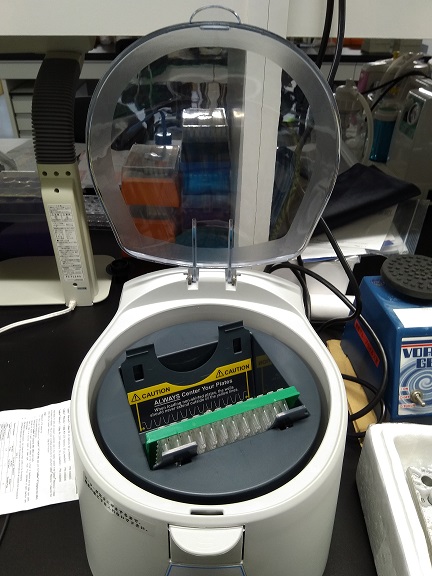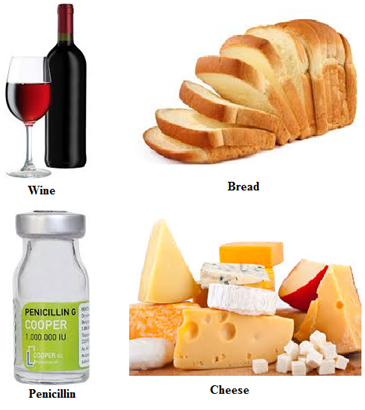Recombinant DNA technology and the use of synthetic DNA molecules make it possible for molecular biology scientists to induce specific mutations in specific genes. In vitro mutagenesis is used to purposefully change genetic information. The analysis of the subsequent changes in gene expression and gene products helps elucidate the functional effect of the mutation.
There are various types of mutagenesis. Site-directed mutagenesis, cassette mutagenesis and random mutagenesis are some examples of mutagenesis. It is noteworthy that the particular mutagenesis method you choose to use will depend on the goal of the project and the information you have about the target gene sequence to be altered.
Site-directed mutagenesis creates a specific change in a known sequence of a gene while random mutagenesis allows researchers to screen for mutations regardless of the genomic location or to quickly create a wide variety of individual mutations.
Cassette mutagenesis replaces a section of DNA sequence with a DNA fragment containing the mutated sequence. Cassette mutagenesis is used to introduce multiple mutations into a given DNA sequence. Random mutagenesis creates mutations at undefined sites and does not require knowledge of sequence or function.
Random mutagenesis is used to identify protein variants with desired properties as well as to understand the interaction of genes in biological pathways. Site-directed mutagenesis creates a mutation at a defined site and requires a known template sequence.
Site-directed mutagenesis allows researchers to investigate the impact of sequence changes, such as single nucleotide polymorphisms (SNPs), or to insert or delete a sequence element, such as a ligand binding site or restriction site. And site-directed mutagenesis can also be used to screen a variety of mutants to determine the optimal sequence for the question at hand.
Site-directed mutagenesis is a method used to create specific, targeted changes in double stranded plasmid DNA molecule. It uses synthetic DNA in addition to DNA-cloning techniques to introduce mutations into genes at precisely determined sites of a gene sequence. There are many reasons to make specific DNA alterations including insertions, deletions and substitutions in a given gene sequence.
Some of the applications of site directed mutagenesis are as follows:
- Site directed mutagenesis is used to study changes in protein activity that occurs as a result of the DNA manipulation.
- It is used to assess the activity of proteins containing known amino acid substitutions.
- It is used to select or screen for mutations (at the DNA, RNA or protein level) that have a desired property; and which can be manipulated further for enhance biological activity.
- It is used to change specific amino acid in an enzyme. In this case, the modified enzyme molecule is assayed and compared to the wild-type enzyme molecule.
- It is used to introduce or remove restriction endonuclease sites or tags.
- Site-directed mutagenesis helps scientists to study the mechanism of action behind biological reactions catalyzed by enzymes in vivo.
References
Bains W (1998). Biotechnology: From A to Z. 2nd ed. Oxford University Press, New York, USA.
Bourgaize D, Jewell T.R and Buiser R.G (1999). Biotechnology: Demystifying the Concepts. Pearson Education, San Francisco, CA.
Brian Robert Shmaefsky (2006). Biotechnology 101. Greenwood Publishing Group, Inc, USA. Pp. 1-273.
Bushell M.E (1998). Application of the principles of industrial microbiology to biotechnology (ed. Wiseman, A.) Chapman and Hall, New York. Pp. 5–43.
Byong H. Lee (2015). Fundamentals of Food Biotechnology. Second edition. Wiley-Blackwell, New Jersey, United States.
Chrispeels M.J and Sadava D.E (2002). Plants, Genes, and Crop Biotechnology. 2nd edition. Jones and Bartlett Publishers, Sudbury, MA.
Clark D.P and Pazdernik N (2010). Biotechnology. First edition. Elsevier Science and Technology Books, Amsterdam, Netherlands.
Das H.K (2010). Textbook of Biotechnology. Fourth edition. Wiley edition. Wiley India Pvt, Ltd, New Delhi, India.
Dictionary of Microbiology and Molecular Biology, 3rd Edition. Paul Singleton and Diana Sainsbury. 2006, John Wiley & Sons Ltd. Canada.
Glick B.R and Pasternak J.J (2003). Molecular Biotechnology: Principles and Applications of Recombinant DNA. ASM Press, Washington DC, USA.
Godbey W.T (2014). An Introduction to Biotechnology. First edition. Woodhead Publishing, Cambridge, United Kingdom.
Jee C and Shagufta (2007). Environmental Biotechnology. APH Publishing Corporation, Darya Ganj, New Delhi, India.
Lee S.Y, Lee D.Y and Kim T.Y (2005). Systems biotechnology for strain improvement. TRENDS in Biotechnology, 23(7):349-356.
Discover more from #1 Microbiology Resource Hub
Subscribe to get the latest posts to your email.



